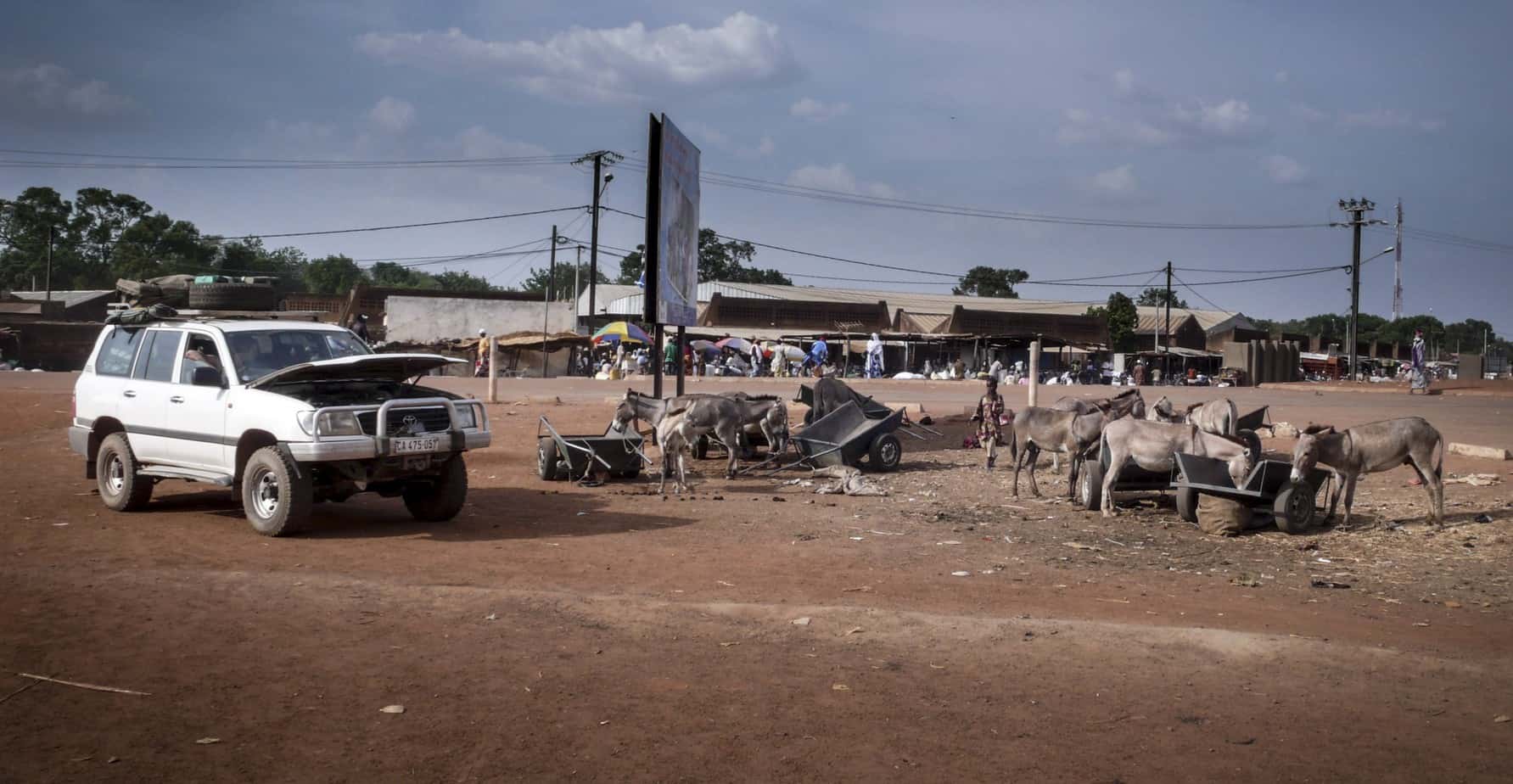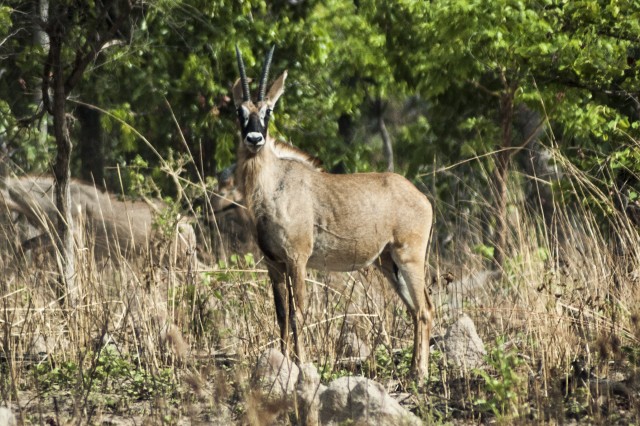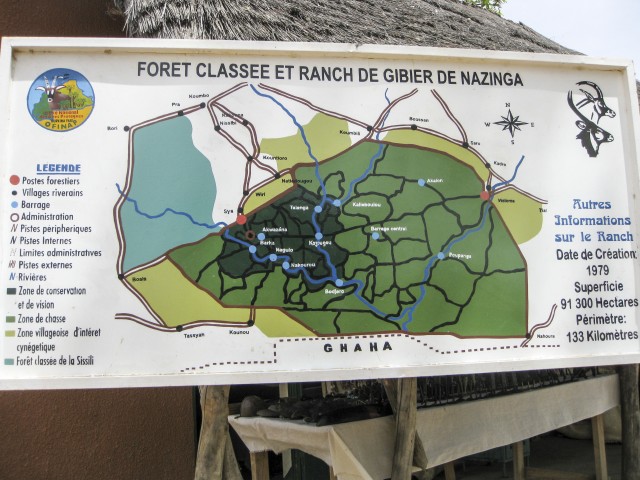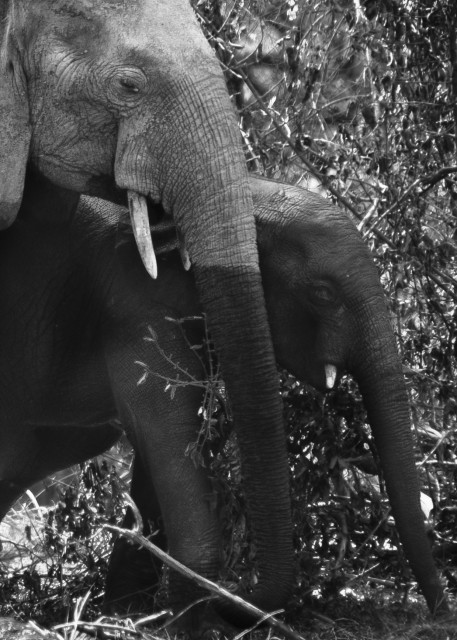As darkness fell, I was scrabbling around on the floor underneath the 100 series Land Cruiser trying to locate the origin of the fast flowing fuel leak emanating from the main tank. With the beam from my head torch, I could see the stream of petrol arcing like an ornamental fountain away from the top of the tank. This was going to be tough to get to, but even tougher to try and repair.
Just moments earlier we had filled up both fuel tanks (by hand) after arriving on vapour. To add further complexity to the situation, we were having engine trouble which was causing a lack of power and eventual halt for five minutes… every five minutes. We were 200Km south of Ouagadougou, the capital of Burkina Faso, and less than five days in. This was not how I envisaged my five weeks mapping National Parks for the MAPA Project…
Let’s go back a little. The MAPA Project (Mapping Africa’s Protected Areas) has been doing its thing around the south and east of the continent since 2008, when I was busy driving around Morocco in my own Land Rover. It wasn’t until late August 2010 that I spotted a thread on the Expedition Portal notifying that they were doing the same for West Africa and looking for volunteers. The post was a number of months old, but I thought it was worth getting an application in. This time around, MAPA decided entrants needed to be in pairs to ensure compatibility. This being the case, I needed a good friend who could take five weeks off with little notice, wanted to travel through some of the most politically unstable and corrupt countries of the world, and working voluntarily at the same time. Bush mechanics, a foreign tongue, Wilderness First Aid training, 4×4 driving skills, some gadget experience and a thirst for outdoor living were all desirable extras.
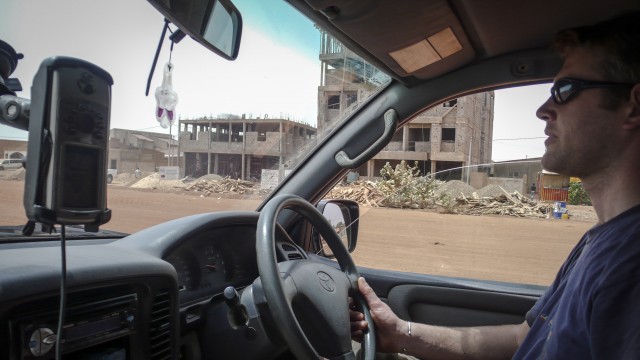
Emails went around some of my more experienced overland travelling friends but the response was a disappointing and resounding no. I put the trip out of my mind. Two weeks later I got a call from Peter, a friend I’d made in Morocco; he had reconsidered and was up for a new adventure. We promptly put our applications in and weeks went by without even a notification. A quick email to March Turnbull (MAPA Director) proved he had not only received our applications, but had put us on the first reserve list. “Is that OK?” he said. Absolutely! A month later March called us up, but Peter was in Namibia. We had to say no. At the end of November, another opportunity came up as MAPA had a 3-month stint to fill early the following year. We put in for mid- March to mid-April when Peter would be around, plus it straddled the holiday year for us both meaning getting time off should be easy…
Routes were planned, and flights were scoured for reasonable prices. Luckily, this took a little longer to finalise, as Peter soon discovered he could not get the full five weeks off work. It was no good. I had to find someone else… fast.
By February, the project was under threat as teams had been mapping east to west from Cameroon and routes were becoming harder to negotiate. The recent civil unrest in the Ivory Coast removed a vital link south along the coast. Parks in northern Mali and Niger were off-limits due to the recent kidnappings and murders of westerners by various terrorist cells. Coupled with the possibility of closed land borders into Guinea-Bissau (due to an ongoing military coup), MAPAs time in West Africa was limited. With the other team two weeks ahead of us, it was decided that they would make their way to Guinea (if possible) through to Sierra Leone, Liberia, Guinea-Bissau then on to Dakar in Senegal, the final meeting point. My route would take me through Burkina Faso, Mali, Senegal and possibly Gambia. With only five weeks to go and nobody lined up, I honestly didn’t think I would be going anywhere. Simon, a friend at work, sounded keen but couldn’t get the time off…so he quit! He felt the time was right to start a new adventure, so he did it in style! The four-week countdown vanished in a haze of injections and packages of Toyota parts, and before I knew it, I was bidding farewell to Lisa on the tarmac of Bristol Airport. The adventure had begun.
Burkina Faso
Touching down in Ouaga (Ouagadougou) the air temperature on opening the cabin doors was a relentless 42°C. Visas and yellow fever certificates were checked, and after a quick rustle of the bags we were cleared from customs.
Our lifeline for the next five weeks was a Toyota Land Cruiser 105 series. South African registered and right hand drive, it unfortunately had the 4.5L straight-6 petrol engine (1FZ for Toyo aficionados). Thirsty? How does 14mpg (20l/100km) sound? Not to worry; we had two fuel tanks topping 120 litres and a further three jerry cans on the roof. Fuel worries aside (for now), we had a 50 litre inbuilt water tank, solar panel, battery charger, braii grill, winch, awning and the legendary MT45 Engel fridge.
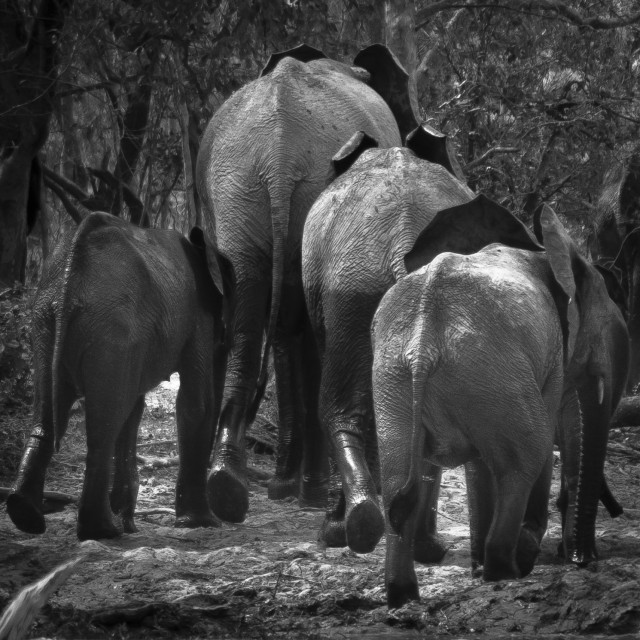
After picking up our Malian visas and an assortment of food, we headed south filled with excitement and anticipation of mapping our first park. When you’re in a new country, you need a little time to adjust to your surroundings. Climate, language barriers, and more importantly for overlanders, road conditions can vary enormously. Driving into Pó after six hours of diversions, potholes, corrugations, dirt roads and tollbooths, we couldn’t find the piste we needed to get to Nazinga Ranch, our first park. Asking the locals proved fruitless; as we would discover soon enough, not many people had even heard of the National Parks. Making our way through a ramshackle market, the dirt road soon opened out to the piste we were looking for and we were on our way to Nazinga Ranch. We had only wasted three hours…
Keen to spot some wildlife, we entered the park early. We paid our fees at the park’s entrance, some 40km from our accommodation in the centre. Less than 10km in, we came across a large herd of antelope cascading through the bush in front of us. Moments later we disturbed a troop of baboons as we passed their watering hole. Stopping at the next hide overlooking one of the many barrages (watering holes/lakes), we spotted crocodiles, herons, rollers, kingfishers and several other bird species. As we crossed the last barrage into
the encampment, we were thrilled to see three elephants cooling off in the water. We couldn’t believe how much wildlife we had seen in the last two hours!
A pair of Canadians established Nazinga Ranch in 1979 for wildlife and ecological studies, developing a 600km network of pistes interlinked with a number of barrages over a 50x40km area. They re-introduced various species that had been poached from the area and worked with farmers to limit livestock in the park’s boundaries. With improved resource management, the park flourished and surpassed all expectations. Today the ranch is nationally owned and aimed at tourists. We spent the next two days mapping the remaining pistes and waypointing barrages, taking in the plethora of wildlife as we went. What a welcome to Burkina Faso.
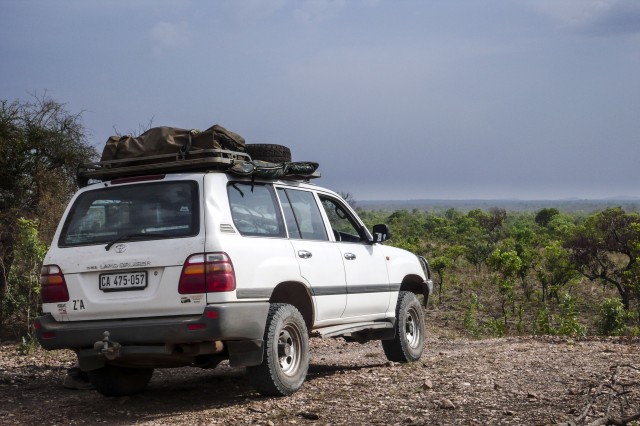

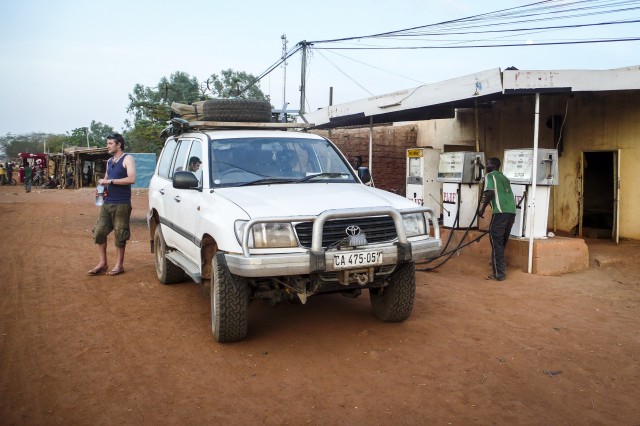
Our elation didn’t last long as our Land Cruiser started to lose power and we were soon reduced to a limp. We suspected air/fuel problems, but there was nothing obvious. We left the park via the west where we passed some of the most remote villages of our trip, a truly unforgettable experience. But we struggled to find fuel so had to digress from our scheduled route and head back north to Sapouy. After finally fuelling up, we decided we needed to be back in Ouagadougou to get the car sorted, so with the sun setting we drove towards the capital.
It was during the drive that we noticed the massive fuel leak. So back in Ouagadougou, we spent the weekend patching the hole in the top of the fuel tank and cleaning out the air filters to fix the power issue. After checking and cleaning the spark plugs, we could still find no obvious problem. We traced the fuel lines, blew out the fuel filter: nothing. We would have to wait until Monday for Africa Motors to look at it. We headed up there early, and they suggested a number of things, none of which solved the problem. But it did improve things and the Cruiser was drivable once it had warmed up, as long as you didn’t need to ‘give it the beans’ at any point which made overtaking a little trickier than usual!
The next morning we arrived at Deux Bales National Park, where the park ranger kindly informed us there was nothing to see. He was still happy to charge the 12,000CFA (US$20) for the privilege of driving around though! We mapped the pistes, way-pointed the entrance, park boundary, park office and all the oued crossings, which were extensive. Stomachs rumbled and the midday sun loomed so we headed off to the encampment, which was under development after floods ravaged the area in 2006. Luckily, the restaurant was up and running, so we had a bite to eat overlooking the River Mouhoun while a man in a dugout canoe drifted silently past.
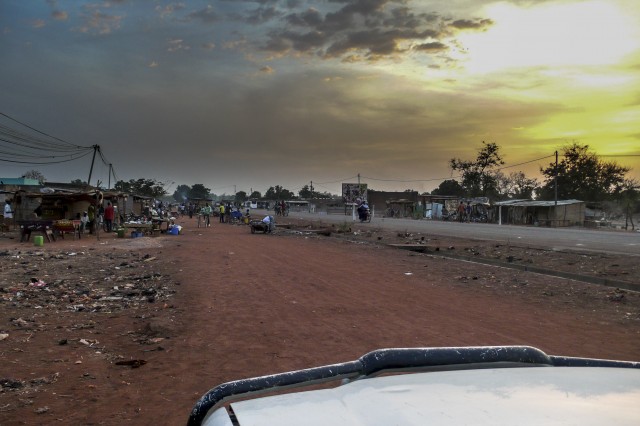
As the intensity of the oppressive heat waned, we set off and covered another quarter of the park, yet we saw nothing but elephant footprints. So, after a quick dinner and some data processing, we decided on an early night. Hopefully, the elusive elephants wouldn’t trample our tents in the dead of night… I woke early the following morning, getting the coffee on as the sun rose to the sound of the dawn chorus. We mapped the remainder of the park
before heading back to Ouaga’ for the night. On the way there we picked up a trio of young Germans who informed us that there had been rioting in Ouaga’ only days ago. Shops, businesses and fuel stations had closed as premises had been ransacked and vandalised. This was bad news for us; we needed fuel and food before heading to Mali. Things had calmed down quite quickly though, and shops started opening their doors. We stocked up on what we needed and headed northwest the next day for the border.


